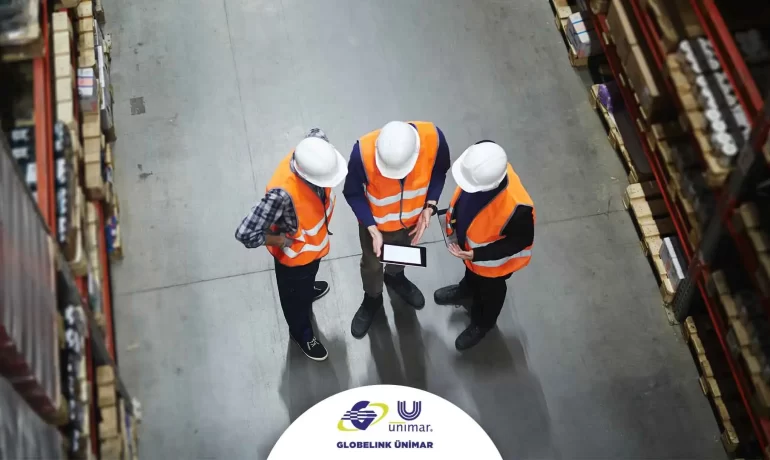
- October 31, 2022
- Blog
The Economic Crisis and the Pandemic, the Legacies of 2008, Have Changed Many Things
The economic crisis, which has continued for 11 years along with short-term improvements, raged with the trade wars in 2019 and got worsened for container companies in parallel with this deterioration in the economy. Container companies started to establish strategic alliances such as P3, 2M, Alliance, and Ocean Alliance in addition to the consortia, strategic alliances and mergers they established long ago in order to be able to utilize their growing vessels to get out of the situation they are in, increase their efficiency, and reduce their costs. Of these, P3 could not be put into operation due to the veto of China and being found in violation of antitrust laws.
Others survived and 9 shipowners within these alliances controlled 89% of the capacity in container transportation for a while. In short, the economic crises increased the clustering at the top.
In the first and second quarters of 2020, which were quite bad, Covid-19 started to spread all over the world and most of the world was going through closure. China coped with this pandemic within 2-3 months, the closures completely ended in early April and non-stop production came back again. In this period, the West gradually began to close and countries began to support institutions and households and Central Banks began to engage in monetary expansion. The type and amount of needs changed and there was an explosion of demand, especially in the USA.
The countries that met this demand explosion in terms of both input and final consumer goods were China and some East Asian countries. Therefore, the demand for ships and the need for containers increased rapidly on East-West routes from China to Europe and the USA.
Due to the pandemic, the waiting periods of the vessels at the ports increased, which reduced the ship tonnage supply in the market by 11-12%. While the number of containers waiting for more than 5 days before the pandemic was 5% of the total container inventory in service, it increased to 25% with the pandemic. This situation caused an increase in freight, especially from China to European and American ports, and increased the fees, rents and production amount of containers as assets.
The Drewry Global Spot Freight Index for 40 ft container, which was 1720 USD in January 2019, peaked at 10,361 USD on 10 September and decreased to 7,945 USD on 14 April. On April 21, the decrease continued and became 7,874. This composite index has had a decreasing trend for 7 consecutive weeks. However, the annual change in routes shows an increase of 51% to 162%.
Although there is some improvement now, the pandemic has caused an increase in freight rates since September 2020. Although the gross profit (EBITDA) of the sector was estimated at 150 billion USD in 2021, it was calculated as 190 billion USD.
Waiting Times are Increasing Again
Due to the increase in Covid cases in China, hundreds of ships have begun to wait outside the ports due to the closures. This congestion in China has spread to other important container ports in the world. As of April 12-13, the number of ships waiting outside ports around the world was 1,826. Ships awaiting reduce the supply capacity of the container fleet by 20%.
This year, the amount transported in both tons and TEU will increase less than last year. (Cargo volume increased by 7% to 208 million TEU in 2021. It is estimated to increase by 4% to 216 million TEU this year.)
The new ship tonnage in the orderbook exceeded 6.5 million TEU 15 years later. This tonnage corresponds to 24% of the current fleet.
Containership Tonnage is Increasing
The new ship tonnage in the order book exceeded 6.5 million TEU 15 years later. This tonnage corresponds to 24% of the current fleet. The number of containers in the market increased by 10.8% in 2021 to 42.9 million TEU. This situation will be a factor that will pressure the freights downwards in two years.
Why Are Container Transport Fees Decreasing or are Their Rates of Increase Slowing Down?
Due to inflation, monetary expansion in Western countries is now slowly coming to a halt and interest rates have begun to tend to rise.
The USA completed monetary expansion in March and started to increase interest rates by 25 basis points. It is expected that this will increase to 50 or even 75 basis points and start to shrink the balance sheet and the EU Central Bank is now expected to launch a tight monetary policy. The consumption behavior of households in the USA has begun to return to pre-pandemic times.
Due to the increasing cases in China, the number of vessels waiting at the ports of Ningbo and Zhoushen has reached 144. In some sources, it is reported that this agglomeration was caused by 506-470 ships in April and March. It is thought that the Russian-Ukrainian war will affect the China-East Europe transports by road/rail on the Northern Route, and this will cause the goods going from the central region of China (IXIAN Internal Faith) to the sea from the northern line and this increasing demand will create a supply chain problem again.
The growth forecasts for the world economy are revised downwards by both the IMF and the World Bank. The IMF reduced its January forecast of 4.4% growth to 3.6 in April. The World Bank reduced it from 4.1% to 3.2%. But more importantly, China’s growth rate expectation for 2022 is reduced from 4.8% to 4.4%.
Nomura Bank also revised its previous forecast of 4.3 percent to 3.9 percent. UBS Group, Barclays, and Standard Chartered economists also revised their expectations downward. However, China increased its growth expectation from 5 percent to 5.5 percent. The new virus wave forced economists to revise their growth forecasts for China downwards. The reason why the World Bank and IMF revised the global growth rate downwards was due to global inflation and the Ukraine-Russia war.
Considering that the year China grew by 6.1 percent in 2019, global sea transport grew by only 0.5 percent, the contraction that China’s growth of less than 6% would create in this industry is beyond explanation.
Russia-Ukraine War Affects Container Transport, Albeit Less Compared to Other Vessel Types
The Russia-Ukraine war affects the container transport segment both positively and negatively with a double vector. Maersk, MSC, Japanese Company ONE suspended Russian deliveries. Traffic in Russian ports decreased by 50%.
Due to the high daily fuel consumption of container ships, the increase in oil prices has increased the variable costs in this transportation, as well as other vessel types, and the lines have started to apply BAF (Bunker Adjustment factor) on many routes or to revise their rate. The control of the vessels departing to or coming from Russia in Northern European ports in terms of prohibited goods caused delays and the vessels to wait. All these are factors that adversely affect both cost and ship tonnage supply. Although container transportation with Russia is not very important, container transportation in the Black Sea is at the level of 2.5-3 million TEU, including Turkish ports, and is at a very low level.
Considering that the number of containers handled at Turkish ports is 12.6 million TEU, 2.5-3 million TEU in the entire Black Sea is quite insufficient. On the other hand, rail transportation (1.1-1.5 million TEU /year) from China to Europe from the Northern corridor via Russia and Ukraine has also been affected and it is claimed that this shift to Chinese ports will create a new container tonnage and container shortage in the current situation.
Due to the regional war, there have been significant increases in all freights, including containers, in the Black Sea region. The reason for this is insurance expenses, increase in fuel expenses, the risk to the business, sanctions against Russia, and the fact not every shipowner wants to carry out this transportation. In other fields, the increase in fuel prices was effective.
Increasing global inflation has also affected underdeveloped countries from different dimensions. Due to inflation and high freight rates, underdeveloped countries cannot import the machinery and equipment necessary to produce high-tech intensive goods and have to continue the production of products such as furniture, textiles (non-high-tech), leather, clothing and underwear, which are classified as low-tech products. This further increases the income distribution gap between rich and developed countries and underdeveloped countries.
The Global Gateway project aims to mobilize an investment of up to EUR 300 billion between 2021 and 2027 to support a lasting global recovery.
Increasing Container Prices are Making Turkey a New Production Center
Due to Turkey’s location, sea container transportation freights from Turkey to the above-mentioned destinations, and even road transportation freights (due to being more convenient than the sea at peak times) have made Turkey a supply center and the competitiveness of Turkish goods in terms of export has increased.
The increases in container freight have disrupted the cost calculations of countries that have some intermediate goods manufactured in the Far East or have them produced in whichever region is the most economical in the value chain and have them assembled in the most economical country.
Global manufacturers have now started to have production and assembly done in their own countries or nearby regions with the “Reshoring” policy. The return from globalism to regional trade also supports this. Thus, the routes are changing and the amount of transport in ton-mile seems to decrease in this respect in the coming years. The fact that this coincides with the increase in ship tonnage supply does not seem to pull the freights down in the coming years.
Artificial Intelligence is Both Changing and Transforming
Today, we can see the clues that we will
The Future of the Cargo Market is Shaped by e-commerce
The e-commerce industry has been growing rapidly since the



